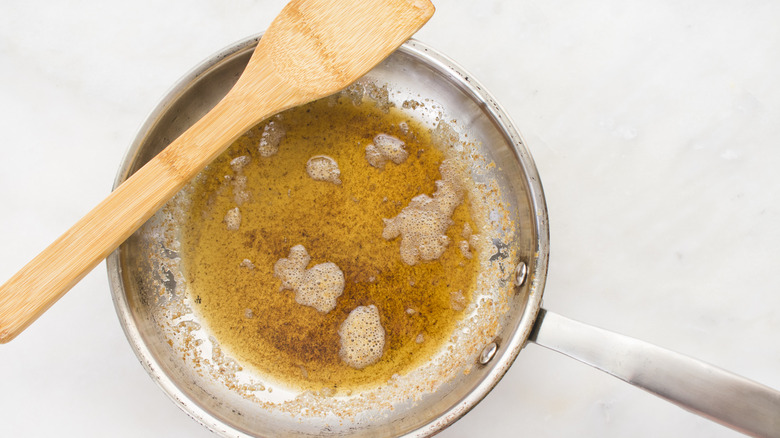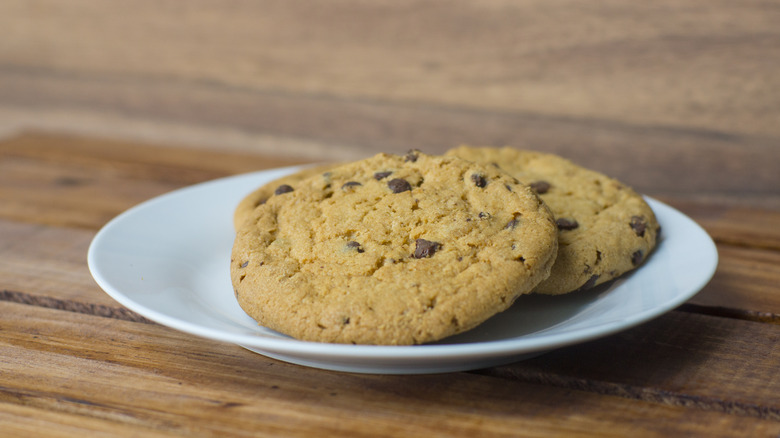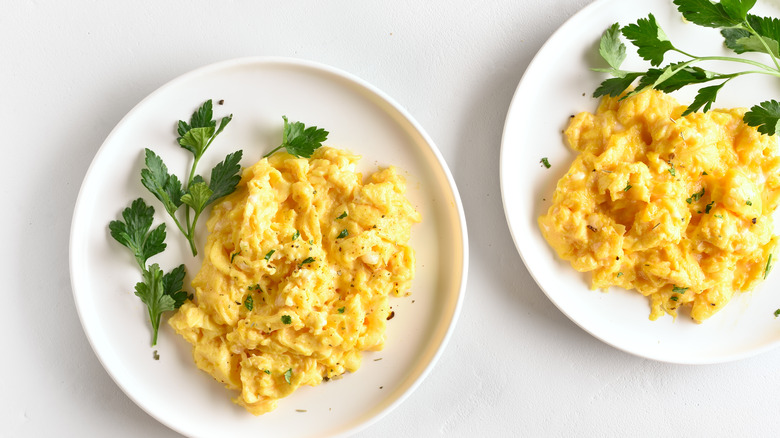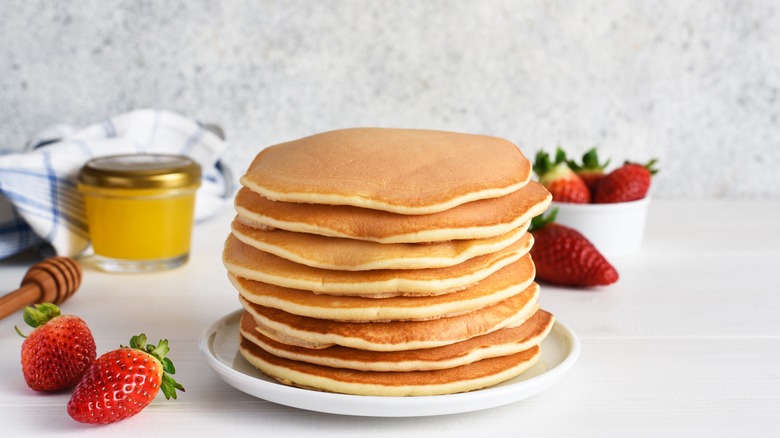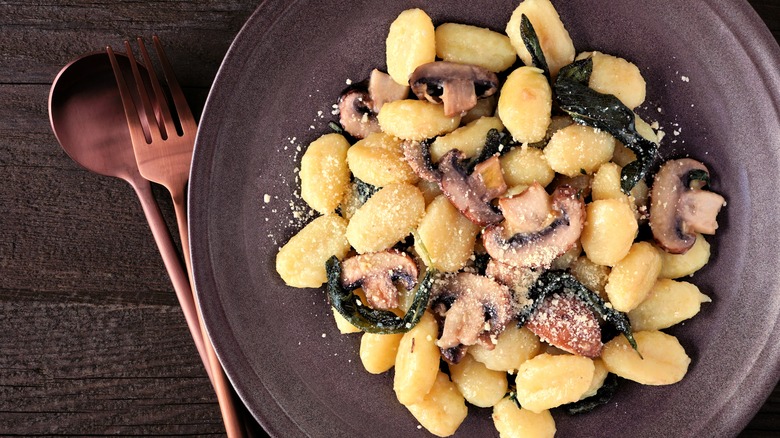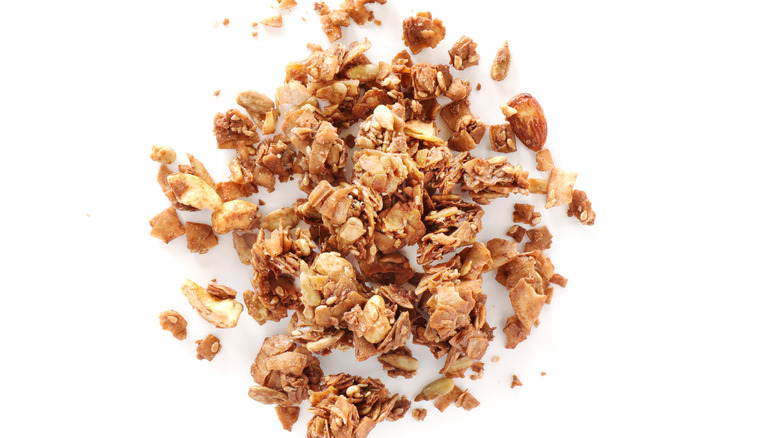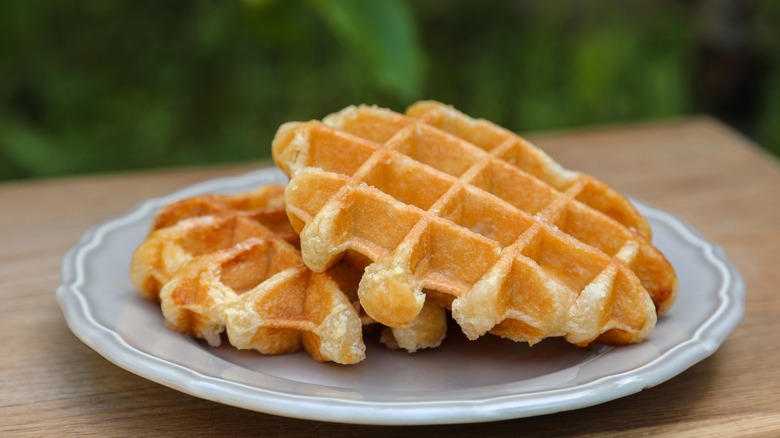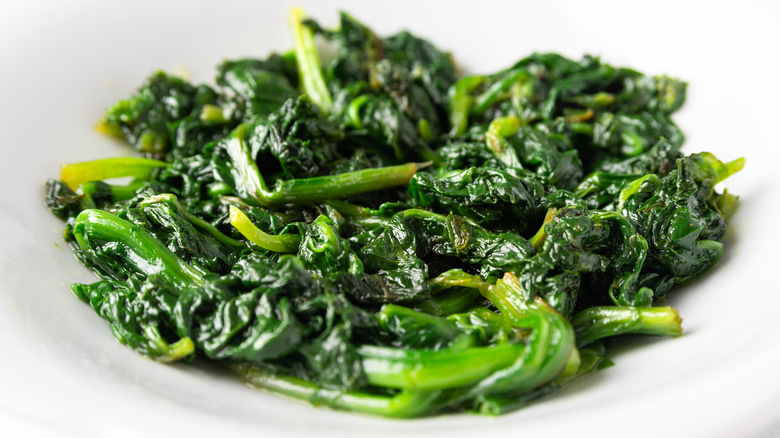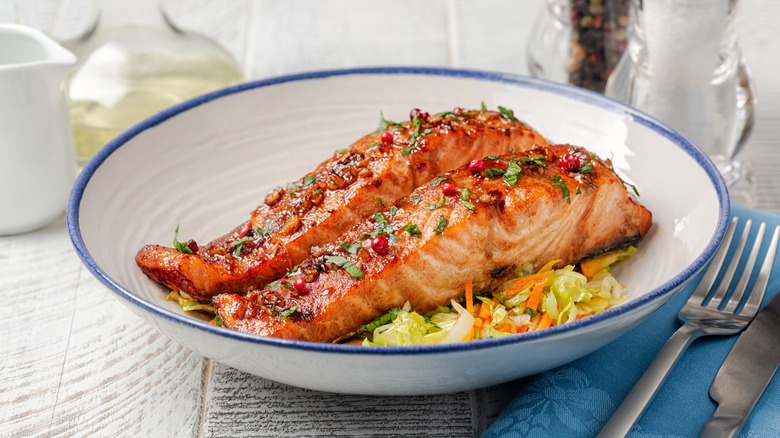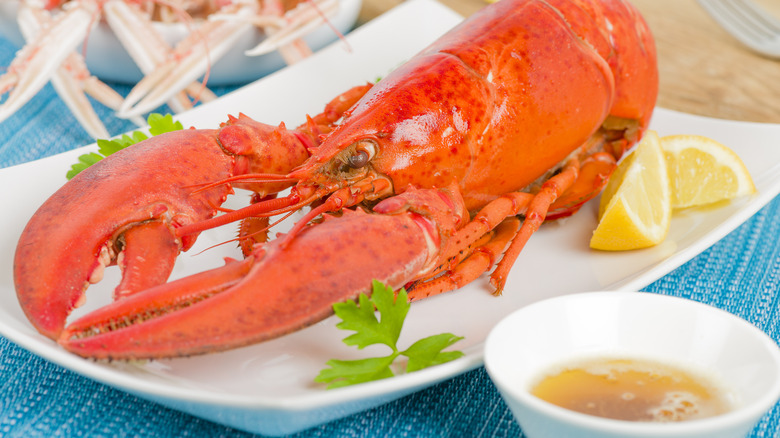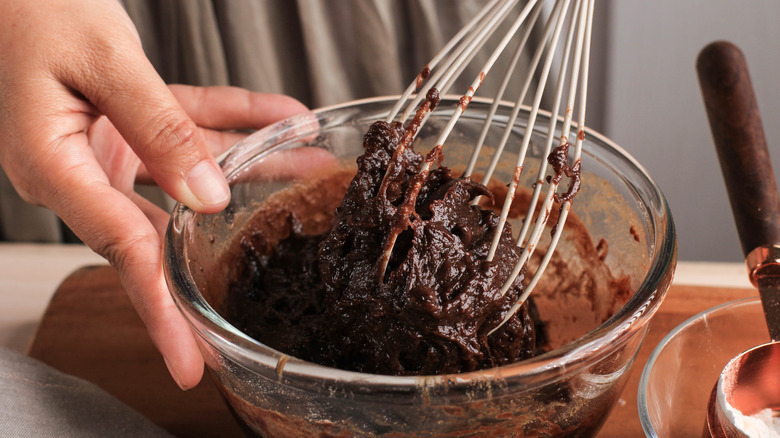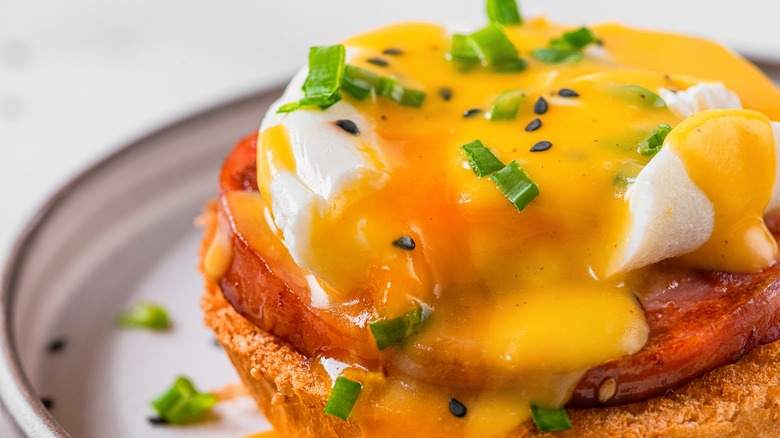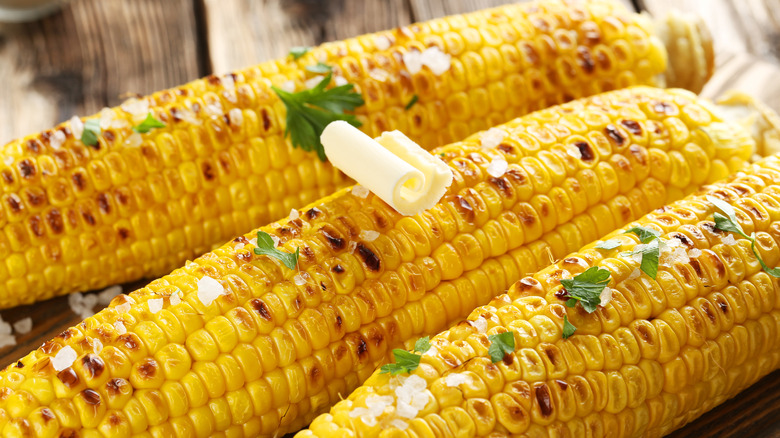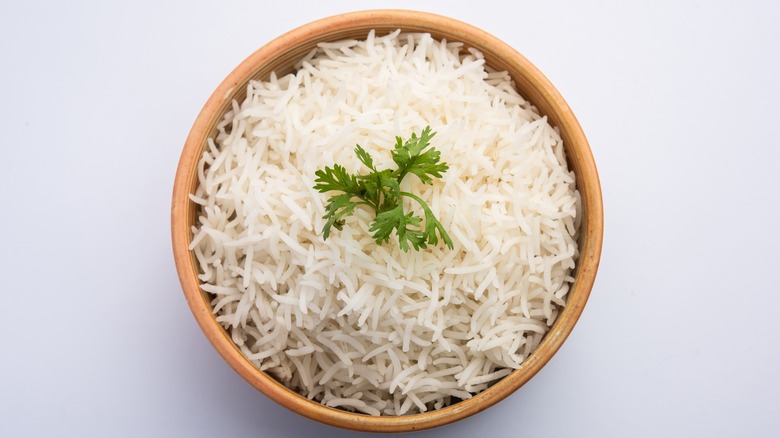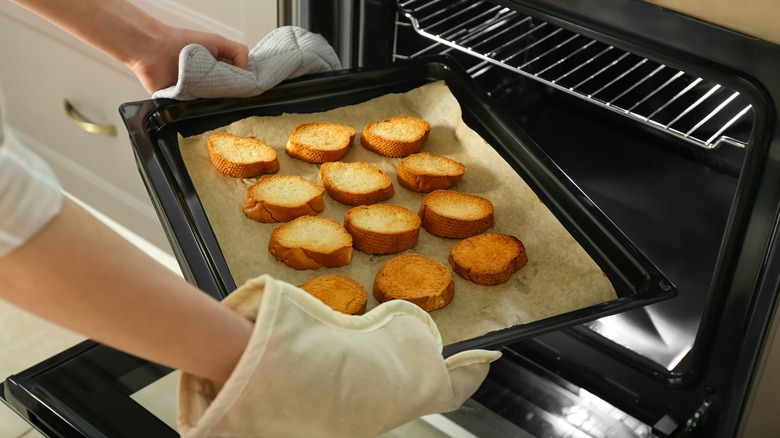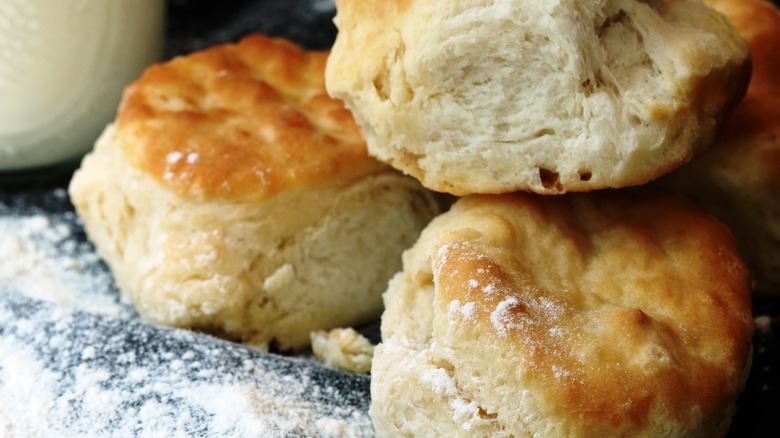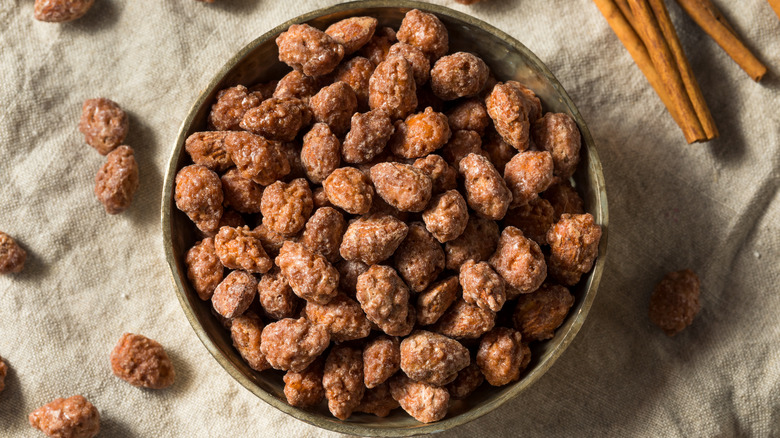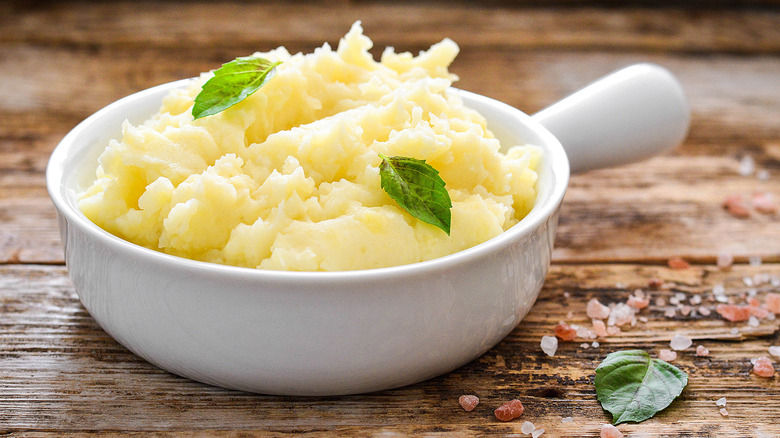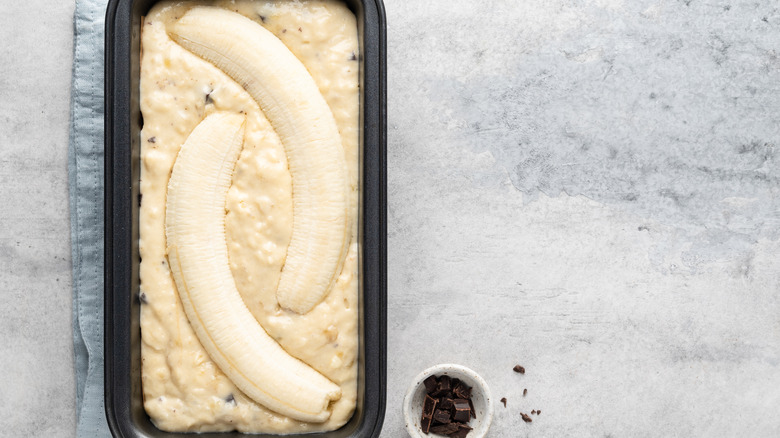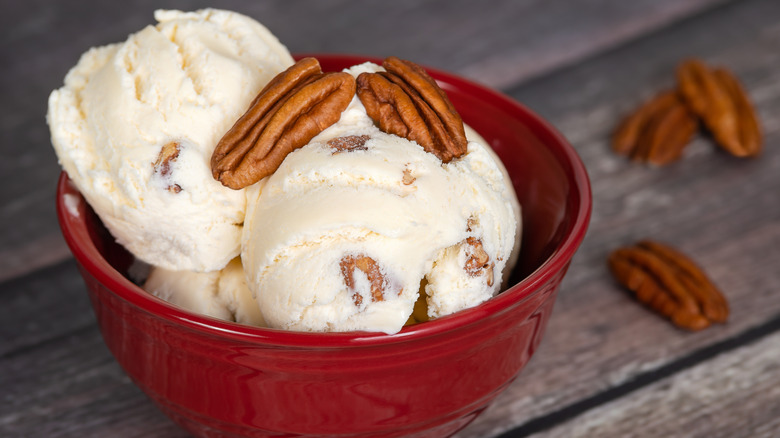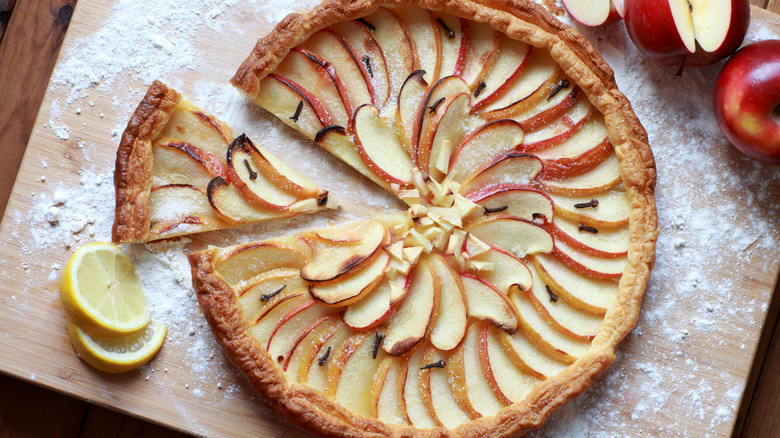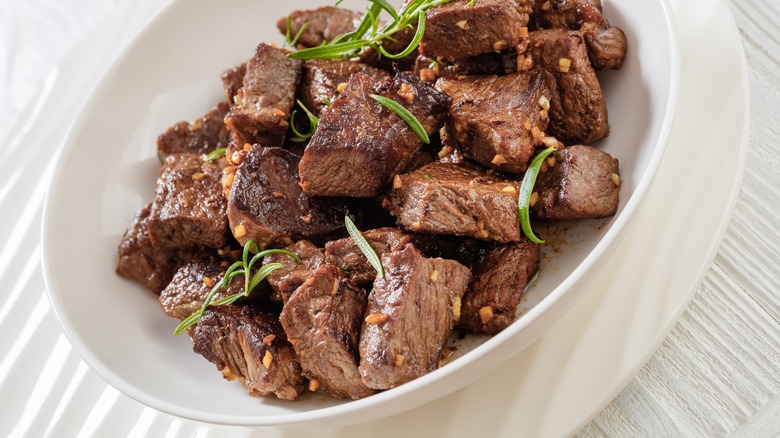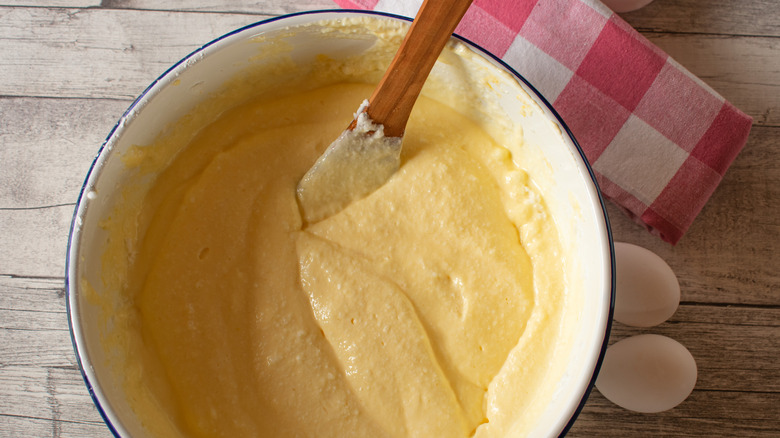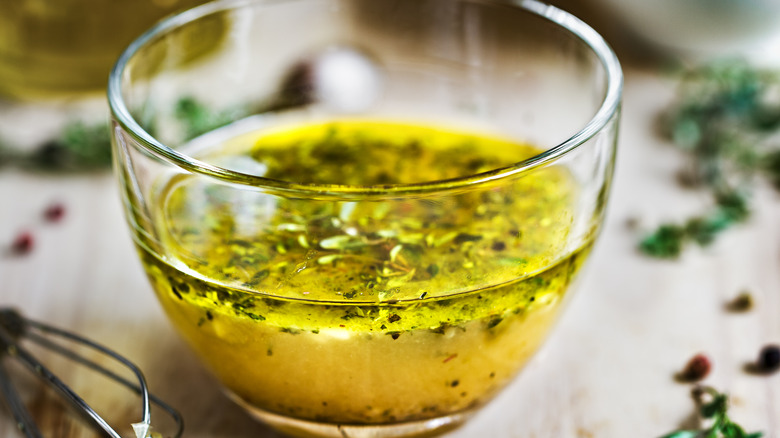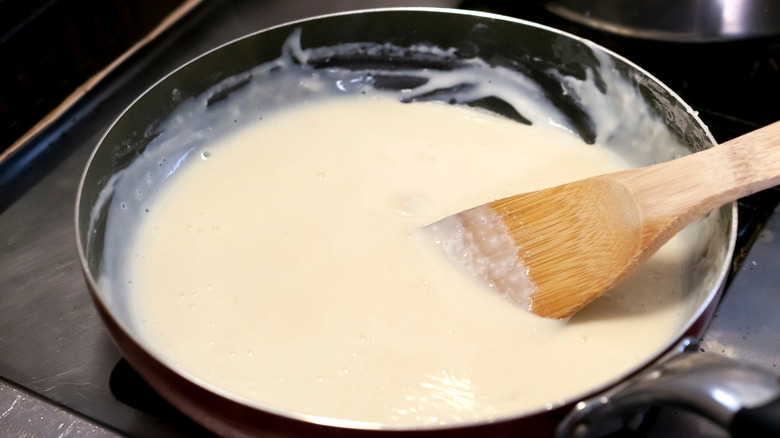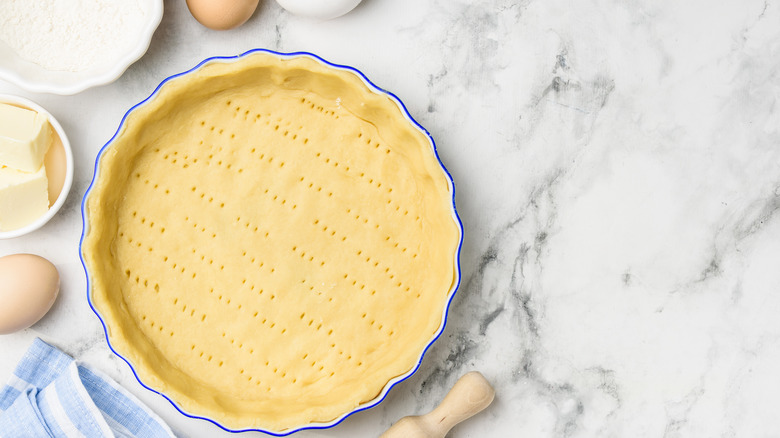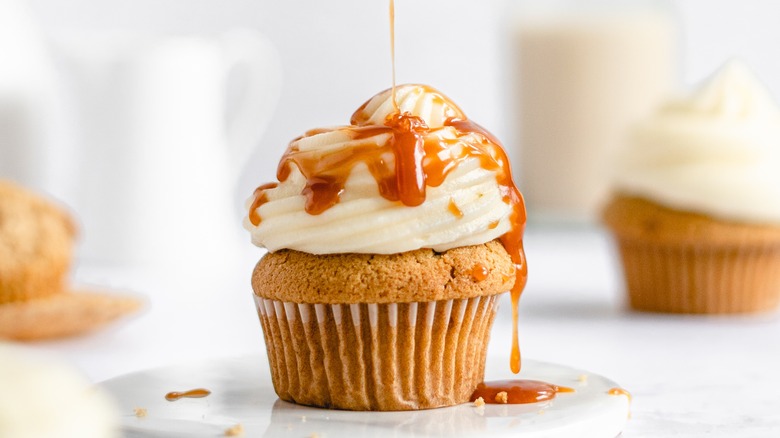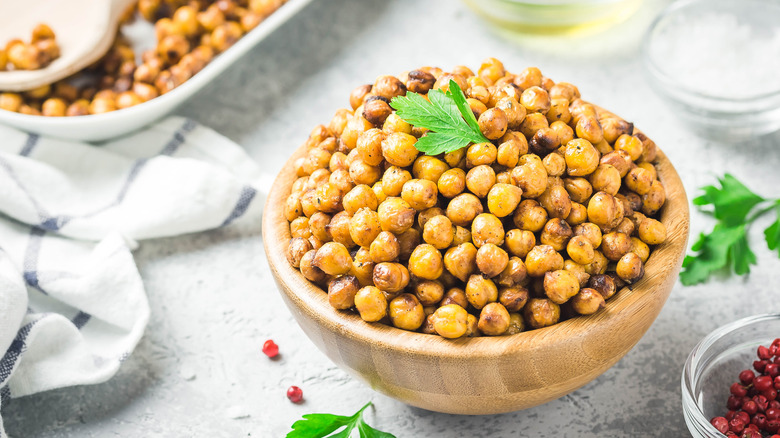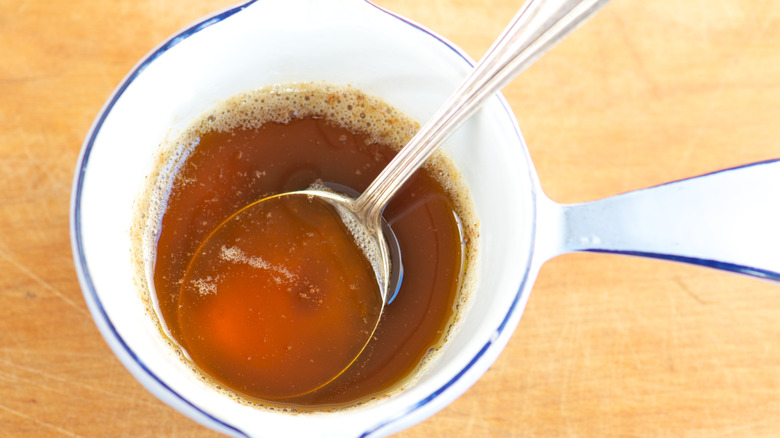The 30 Best Uses For Brown Butter
Cooking and baking are much more decadent when you add brown butter to the mix. This nutty, caramel-tasting flavor enhancer is made by melting butter in a pan until tiny brown specks form as a result of the Maillard reaction. This occurs when the water evaporates from the butter, and the sugars and the amino acids in the remaining milk solids start to develop new flavor compounds. While there is nothing wrong with using a basic preparation, you can also elevate brown butter by adding powdered milk (which are concentrated milk solids) to further the Maillard reaction and develop more aromatic flavors.
The precious liquid also many practical applications in the kitchen and can be used for baking and cooking. If you need a special occasion to make a batch for yourself or have left brown butter from another recipe, here are some of our favorite ways to use this ingredient.
Incorporate it into your favorite cookie recipe
Who doesn't want a decadent caramel and nutty taste in their favorite cookie? Substitute the butter for brown butter in your cookie recipe to amplify its flavor. Once you've made your brown butter, you'll want to adequately cool it before adding it to the rest of your cookie batter. This will prevent you from cooking the ingredients before the batter hits the oven. If you're using a recipe that does not initially call for brown butter, you should also note that cooking brown butter will decrease its volume — since you're cooking off all the water.
Cook your favorite eggs in it
If you're not already adding brown butter to your scrambled eggs, you need to start now. You'll get a hint of nutty flavor, which contrasts nicely with the richness of the egg yolk and any seasonings you'd want to include. Add brown butter to your eggs after cooking for the most robust, toasty flavor possible. You can also add a bit of brown butter to other types of eggs too, including fried and over-easy preparations.
Elevate your batter for pancakes and waffles
You can add many unexpected ingredients to improve your pancakes, including seltzer, beer, and sourdough discards. But one of the best ways to give a boost to your batter is to substitute melted butter or oil with brown butter. The brown butter will provide contrast to the already sweet taste of your pancakes (or waffles, if that's your bready breakfast preference) and add another layer of decadence. We recommend pairing brown butter with a scoop of malted milk powder. Malted milk powder is made with milk solids, so you'll get a more complex flavor if you add the two to your pancakes together.
Pair it with savory ingredients in a pasta sauce
Substitute regular melted butter with brown butter if you want to upgrade your simple pasta sauce. The nuttiness of the brown butter amplifies the simple taste of the pasta and is guaranteed to please your tastebuds. Your brown butter sauce poured over gnocchi and filled pasta such as ravioli will taste even better if you add complementary herbs like sage, oregano, and tarragon. Finish with a sprinkle of Parmesan and dig in.
Use it as a binder for homemade granola
Anyone who has made homemade granola knows it's all about the flavor. If your recipe includes components like pecans, oats, or coconut, you should consider adding brown butter as a binding agent. The brown butter will enhance the nuttiness of the other ingredients while also helping keep your granola crunchy. Add your brown butter with your other binding ingredients, like honey or maple syrup, and pour over the dry ingredients before baking.
Top your favorite breakfast foods
If you don't use brown butter in your pancake or waffle batter, you can instead use it as a topping. The brown butter will slowly infuse into your favorite breakfast foods and provide your tastebuds with a little bit of toasty flavor in every bite. We recommend pairing a brown butter topping with maple syrup or a crunchy, nutty topping like granola or chopped roasted pecans for the ultimate breakfast experience.
Sauté your greens in it
Cooking vegetables without adding seasoning can result in a bland side dish. But with brown butter, you can replace the olive oil or butter you'd toss the greens in after you blanch or cook them. Adding fat to greens doesn't necessarily defeat the greens' nutritional profile, either. Eating a dose of fat with greens like cabbage, collards, and chard can increase the absorption of fat-soluble nutrients like beta-carotene and lycopene.
Keep your grilled cheese from sticking
Cooking your grilled cheese in brown butter is one of the easiest ways to make its flavor more complex. You can use the same pan to brown your butter and then slide the sandwich right in. This will soak up all the delicious remnants — and result in fewer dishes for you to clean. Once you've cooked the sandwich for a few minutes on each side, you can eat it as-is or bake it in the oven for a couple of minutes for a crispy crust and melty interior.
Use it to glaze salmon
Salmon and brown butter are a match made in heaven. After you've browned your butter in the pan, we recommend mixing it with dried herbs, green onion, garlic, honey, or maple syrup for a more complex flavor. Baste your salmon filets with the sauce while it's searing in the pan before transferring it to your oven to broil for a few minutes. After that, you won't go back to eating plain salmon ever again!
Dip lobster into it
Everyone knows the classic lobster-and-melted-butter pairing. But if you want a more flavorful dipping sauce, use brown butter instead. The saltiness of the crustacean pairs well with the nutty, toasted flavor of the brown butter.
If you're not one for dipping, you can also substitute brown butter for regular butter if you decide to broil your lobster tails. The addition of Dijon mustard, garlic, and lemon juice work seamlessly with the flavor of the brown butter and can take this special date night dish to new heights.
Blend it into your brownie batter
You must take your brownies to the next level by substituting butter for brown butter. If you pour the brown butter into the recipe when you add your chocolate, it will boost the sweet notes of the brownie and add a toasty undertone. The buttery consistency will also help keep your brownie moist and fudgy rather than dry and cakey. Of course, if chocolate isn't your thing, you can also swap this simple ingredient into your favorite blondie recipe.
Upgrade your hollandaise sauce
Hollandaise is the star of the show for perfect eggs benedict but the standard recipe can be improved. That's why we recommend using brown butter for a decadent eggs benedict upgrade. You'll want to add the butter to the lemon juice and whisked eggs slowly, though, to prevent textural inconsistencies in your sauce. You can also end up curdling the eggs and starting from scratch. Pair your nutty hollandaise with toppings like capers or smoked salmon for a savory breakfast.
Brush it on corn-on-the-cob
Nothing says summer quite like corn on the cob. And while the trio of butter, salt, and pepper is always a go-to, we admit it can get boring. So instead, you can use brown butter to help bathe your corn kernels and ensure your cob is barbecue-ready. We recommend pairing the brown butter with other seasonings like miso, fermented soybean paste, and yuzu kosho, a Japanese ingredient made with fermented spicy pepper.
Season your grains with it
Adding butter after your favorite grains are finished cooking can help round out their flavor more than just eating them dry. If you want to enhance the warm flavors of your farro or quinoa, we recommend adding a bit of brown butter. Before cooking, you can also toast your grains by adding them to a sauté pan with oil or butter and tossing them until they emit a toasted aroma and darken in color.
Coat homemade croutons or breadcrumbs
Croutons and breadcrumbs are two of our favorite ways to use stale or leftover bread. You can use the stovetop method to make croutons at home and plan to eat them that day. Toss your stale bread in the brown butter and cook until the crumbs start to get hard. Then, place the croutons on a towel-lined plate and add your desired seasoning. If you plan to make breadcrumbs or croutons for future use, stick to baking the crumbs in your oven instead. Toss the crumbs in the brown butter and bake them for 10 to 15 minutes.
Brush homemade biscuits with it
Whole, cold butter is an essential textural element in making homemade biscuits. When the butter melts, it releases steam and helps the biscuit layers puff up. Unfortunately, since brown butter has all of its water removed, you can't substitute it into the recipe. However, you can use a pastry brush to swipe a layer of brown butter on the biscuits after baking. Not only will you get the beautiful color of the brown butter, but you'll also get a light toasty flavor that pairs well with raspberry jam or a drizzle of honey.
Glaze roasted nuts with it
Roasted and glazed nuts are two of the most underrated fair foods. Who can resist a handful of the nutty and smoky aroma of delectable almonds, pecans, or peanuts? You can make your own roasted nuts at home with brown butter. Glazed nuts typically take about 10 to 15 minutes to bake and require only a few ingredients: seasonings, brown butter, and your nut of choice. If you're making a sweet recipe, add the brown butter with the seasonings and the sweetener (often honey or maple syrup) together before tossing it with the nuts. An even, single layer allows air to circulate and dry the nuts adequately.
Stir it into your mashed potatoes
Adding brown butter to your mashed potatoes will change your thoughts about this simple side dish. The addition provides a layer of complexity that regular butter couldn't dream of. If you want to venture more into the unconventional realm of mashed potatoes, start with hazelnut-browned butter mashed potatoes. Adding the chopped, roasted hazelnuts to the brown butter will infuse a ton of flavor, which is then carried over into the starchiness of the mashed potatoes.
Add it to banana bread
Sweet banana, toasty brown butter — can it get any better? Add chocolate to the mix, and you'll have the perfect banana bread. Our brown butter banana bread also uses a secret ingredient — sour cream — for moisture and a soft texture. Combine the brown butter with the brown sugar and other liquid ingredients before mixing it into the dry ones. Adding the liquid ingredients together is vital to avoid prematurely activating the leavening agents (like baking powder or baking soda) — which would cause the banana bread to rise improperly in the oven.
Give your ice cream extra flavor
I scream, you scream, we all scream for brown butter ice cream — right? Brown butter pairs excellently with savory ice creams and sweet ice creams alike. Our favorite complementary ice cream flavors include apples, pecans, brown sugar, and cookie dough. We recommend cooling the brown butter all the way before adding it to your egg yolks and cream to prevent curdling. Enjoy solo or pair a scoop with your favorite pie (pumpkin and apple are ideal).
Use it in a tart
Brown butter and fruit are a noteworthy flavor combination. One of the easiest ways to enhance the flavors of your fruits with brown butter is to make a tart. A good apple tart, for example, has a custardy layer brimming with opportunities to infuse brown butter. Mix the cooled brown butter with your eggs, lemon juice, vanilla, sugar, and salt to prepare your custard. Once assembled and baked, you'll find that the autumnal flavors of the apples and the brown butter are nothing but decadent.
Roast oysters in it
Roasted oysters with bourbon-infused brown butter? Count us in. The bourbon, added to the butter with a splash of lime juice at the tail end of cooking, is the perfect flavorful, warming addition to a food like oysters. Once you've roasted your oysters in the oven for about six minutes and shucked them, you can drizzle the bourbon brown butter on top for the perfect contrast to the saltiness and fresh-from-the-sea flavor of the bivalve.
Use it to keep steak moist
You can use brown butter to amplify the flavor and moisture of almost any cut of steak. If you want to increase the aromatic profile of your steak, add a bit of garlic, fresh herbs like tarragon and sage, and dried spices to the brown butter as it's cooking. Then, drizzle the brown butter on your steak and let it rest for at least five minutes before slicing. The resting period is critical because it allows the butter to soak into the steak and lets it finish cooking internally.
Add it to boxed cake mix
Boxed cake mix can be bland and boring if you don't add your own creative spin. One of the easiest ways to do so is to substitute equal parts brown butter for any oil or butter in the recipe. The brown butter will lock in the moisture just as much as other fats but with the addition of toffee and caramel flavor notes. We recommend making this swap for all types of cake mix, but especially for vanilla, spice, or devil's food cake.
Use it in a salad dressing
Why buy store-bought salad dressing when you can make your own in minutes? To make homemade salad dressing, you'll need to combine three ingredients in a blender: brown butter, vinegar, and Dijon mustard. You can use this dressing for almost any type of salad or to season roasted carrots or root vegetables. The mild, fatty flavor balances out the bitterness of greens like arugula, but it can also be used as a dressing for salads with sweet components like dried fruit.
Boost your béchamel sauce
Next time you prepare lasagna, consider preparing a brown butter béchamel. The alliterative sauce is not only fun to say, it's delicious to eat. Adding brown butter to your béchamel sauce will add mild caramel notes that pair well with any spices and herbs you add to it. Nutmeg, for example, is one of the spices that cooks will add to béchamel right before pulling it from the heat. Instead, add your finely grated nutmeg to the butter as you cook it for an even toastier flavor.
Incorporate it into your pie crust
While cold butter may be an integral ingredient for pie crusts, there is a way to get brown butter's flavor without worrying about your crust disintegrating. You'll need to chill the brown butter as much as possible before adding it to a bowl with your other standard pie crust ingredients: the flour and the salt. Then, add a couple of tablespoons of ice-chilled water to the crust and mix until cohesive ball forms. Since browning the butter removes its moisture, you'll need to add more water to this crust than if you used regular butter.
Use it in cake frosting
Don't worry, we're not messing with the typical buttercream recipe. We are, however, making our own browned butter frosting — perfect for sheet cakes, layer cakes, and every cake in between. Combine the chilled brown butter with powdered sugar and vanilla in a stand mixer, beating at medium speed until firm. You can add some milk or cream to the mixture to help make it more spreadable. It's important to note that brown butter won't retain its shape as well as buttercream frosting, so we recommend sticking with the traditional stiff buttercream for decorating cakes and doing piping work.
Crisp up chickpeas with it for an easy snack
Roasted chickpeas are a nutty ingredient, so it's safe to say that adding brown butter only amplifies what's already there (and yes, that's a good thing!). You can substitute the olive oil in a recipe for browned butter to help the outside of the chickpea crisp up and become the perfect crunchy snacking consistency. Add your favorite seasonings to the brown butter to help make the chickpeas a little less bland; we recommend za'atar, paprika, or Italian spice.
Store it for future use
If you make too much brown butter for a recipe, you can always keep some on hand for later After all, there are so many ways to use the ingredient! The best way to store brown butter is in the freezer. First, allow the brown butter to cool to room temperature before transferring it to ice cube trays or an airtight container. When you're ready to pour, stir the brown butter to move all the toasty particulates around — this will result in the best flavor when it comes time to use it. After your brown butter is in its vessel, transfer it to the refrigerator to allow the butter to solidify, then move it to your freezer. Brown butter that's properly stored and chilled will last about three months.
